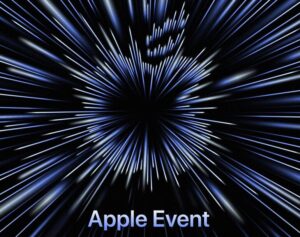The Apple Reminders app baked in iPhones, iPads and Macs provides a quick and easy way to track tasks. Adopting a few new Reminders extends the program’s usefulness even more.

Most professional seeks ways to become more efficient – the sheer number of related best-selling books and task-tracking apps testifies to that fact. Subsequently, most Apple users are familiar with Reminders, the free task-tracking program pre-loaded by Apple on iPhones, iPads and Macs, but not everyone may be familiar with some of the app’s features that improve its usefulness. Here are five ways to make the most of Apple Reminders, whether you’re using an iPhone, iPad, Mac or any combination of the three.
SEE: Maximize your work-from-home productivity with these tools (TechRepublic Premium)
1. Use and customize multiple Lists
It’s human nature to jump right in. Reading the instruction manual is so universally skipped the habit’s spawned its own, if profane, acronym: RTFM. So when it comes to using Reminders, many just begin adding tasks directly within the app’s default Reminders list.
Do yourself a favor. Create multiple lists (Figure A). If you’re tracking multiple projects, like most, create a list for each initiative. Create another for personal responsibilities, checklists and even quarterly or annual reminders. Then customize each list by changing its icon and color to better help you spot and sort the tasks that typically constitute your workday.
Figure A

2. Assign deadlines
When tracking multiple tasks, it’s important to prioritize individual reminders. Flagging responsibilities for follow up and setting priorities (low, medium, high) are two steps that help ensure important assignments aren’t accidentally overlooked. But the Reminders app also lets you set due dates, as well as specific deadline times of day (Figure B). So, if you’re tracking a task that must be completed before lunch or the end of the day, ensure reminders include that information.
Figure B

Because Reminders offers a Today view, spotting tasks that must be completed before others, even on the same day, becomes easier. But you must set date and time deadlines for the feature to work, so be sure to do so.
3. Share tasks
You don’t have to do everything yourself. Collaboration and teamwork, key success factors, are particularly important with so many teams working remotely due to the pandemic. As Reminders permits assigning tasks to others, the app is yet another tool you can use to coordinate and track assignments and responsibilities.
Assign tasks to others within Reminders by sharing a specific list. Just highlight the list, select the More icon, choose Share List and specify the users (via Messages or Mail or even Outlook or Teams, if installed on an iPhone, iPad or Mac). Once a list is shared, all tasks included within that list will include the Assign Reminder option. Select the Information icon for any reminder included within that list and use the Assign Reminder option to assign the task to specific individuals.
4. Add locations
When setting reminders for tasks that must be completed at other sites, use the app’s Locations feature. Traveling to multiple clients and prospect sites throughout the day taught me the helpfulness of entering addresses within both calendar appointments and task lists. The easier it is to find locations, the less confusion that results. Stress lowers, too, when you’re running late and are having trouble finding a site.
Because an address embedded within Reminders as a Location automatically displays a street map (Figure C), confirming an address or suite number or even determining the best route becomes easier. When sharing and assigning tasks to someone else, especially someone unfamiliar with the work site, including location information can save significant time and anxiety, yet doing so takes only a minute.
Figure C

5. Enter notes and tags
Notes are a no-brainer, yet there’s always a continual natural temptation to add just titles for a reminder. Entering “order circuit” or “replace domain controller” as titles when other information is fresh may cause you to forget important facts later. For example, you may forget the specific WAN IP needed for a new circuit or you may not remember the replacement server you need to order must be a 1U due to insufficient space existing within the server enclosure for anything larger. Entering notes and details while they’re fresh helps eliminate mistakes later.
Last, tags help locate specific tasks, assignments and notes. Information stored within a completed or forgotten task, for example, might be needed for a new initiative or related dependency, but if you don’t remember which reminder contains that information, tracking it down can prove tough. Using tags almost always pays dividends later, so adopting the habit is a good investment for the future.
Source of Article



